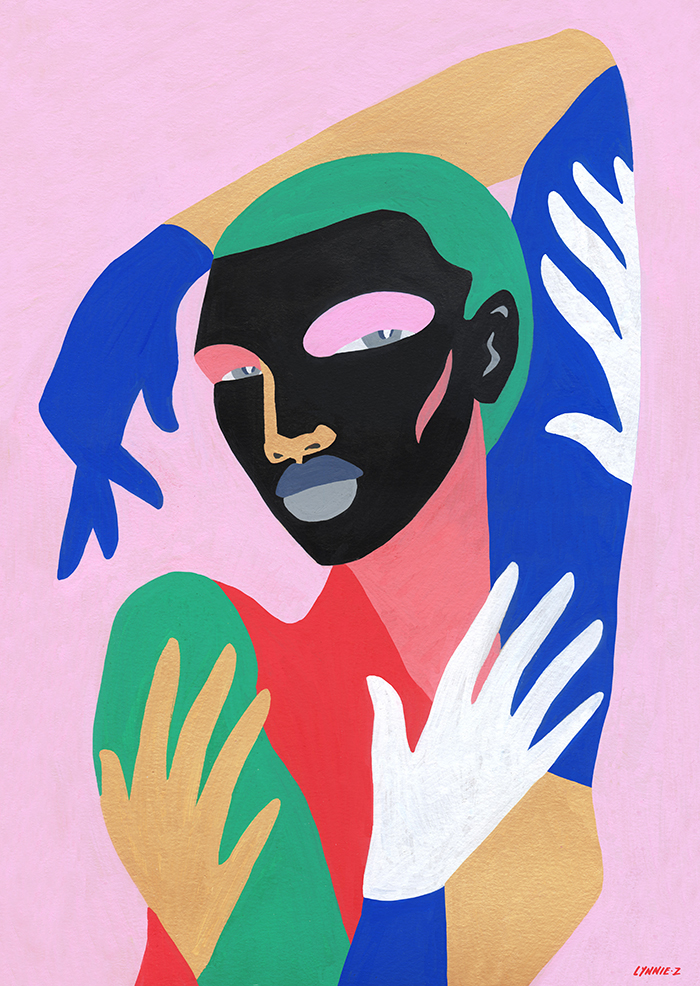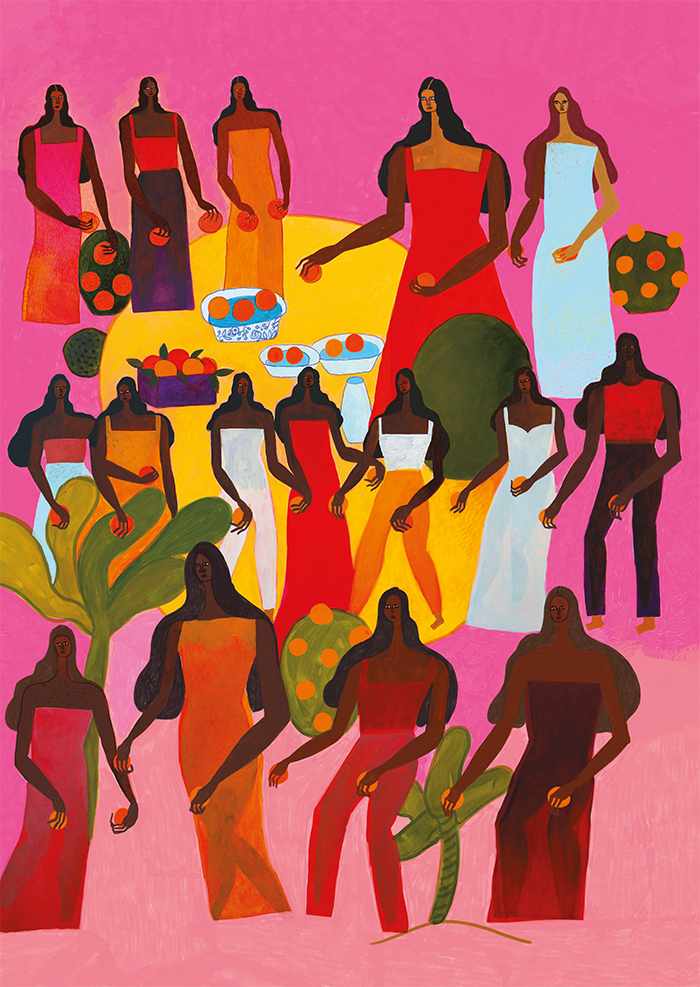Protection: illustrators interpret universal human rights in new exhibition
To mark the 70th anniversary of the Universal Declaration of Human Rights, 30 artists and designers from across the world have designed prints representing our fight for equality, from women’s rights to freedom of expression.

This year marks the 70th anniversary of the Universal Declaration of Human Rights – a document that was put together in 1948 after the tragedies of World War Two, which sets out the minimum standards of living that everyone around the world should be entitled to.
The declaration covers 30 articles, including rights such as: all people are born free and equal; everyone has the right to life, liberty and security; no one should be held in slavery, subjected to torture, or cruel and inhumane treatment; everyone has the right to a fair trial, and the right to freedom of expression.
The aim of the declaration is that its rights are meant to be protected and held by everyone universally. While not a legally binding document, it has been signed and accepted by nearly every country in the world, and for this reason, it has been translated into over 360 languages.
Violations of human rights

But despite this benchmark for human rights, violations of the declaration have happened consistently over the last 70 years and continue to happen all over the world.
The slave trade and trafficking of women and children in several African countries; the inhumane torture of prisoners in Guantánamo Bay, Cuba; wars that have seen thousands of civilians killed in countries such as Afghanistan, Syria and Iraq; human rights defenders and journalists killed for expressing their views; these are just a few examples of indecent breaches of the declaration.
Global human rights charity Amnesty International looks to acknowledge and expose instances where people’s rights are violated and tackle and prevent existing and future breaches.
Its latest awareness campaign is an exhibition, created in collaboration with Riposte, an independent print magazine that champions women and non-binary individuals.
30 artists look at our fight for equality

The week-long show, named Protection, is on at King’s Cross’ Coal Drops Yard this week, and features graphic prints created by 30 female and non-binary artists, illustrators and designers, which all respond to the 30 articles of the UDHR in some way.
Danielle Pender, editor at Riposte and curator of the exhibition, says that this new show is contributing to Riposte’s role as part of Amnesty Collective, a group of artists, publications and activists which look to spread the charity’s campaign messages to their various audiences.
She adds that she chose the 30 artists for the show with the aim of gathering a “wide generational spectrum and a range of artistic styles”, so opted for both established artists and young, up-and-coming ones.
“We looked to people we’ve worked with before, and artists, designers and photographers whose work we admire,” she says. “We also made sure that the artists involved were a global mix, to reflect the myriad of ways that we’re affected by the issues around human rights.”
Hattie Stewart, Guerilla Girls and Kelly Anna

Contributing artists include Guerrilla Girls, Hattie Stewart, Kelly Anna, Nathalie du Pasquier and Esther Mahalangu, and themes explored through their work include freedom of movement, protection of women’s rights and our bodies, freedom of expression, access to education and the collective need to look out for and protect each other. Artistic styles range from purely typographic, graphic design and illustration, through to photography, hand-drawing and doodling.
Some pieces are more specific, such as the Guerrilla Girls’ brutal analysis of the inhumane conditions that homeless people are subjected to, while others are more abstract and have more positive connotations; Manuja Waldia’s colourful interpretation of Black, Asian and minority ethnic (BAME) women suggests community and warmth.
Some prints are “personal” reactions

“Some of the artists have reacted to the articles in the UDHR, and some have considered a more personal response to the theme of ‘protection’,” she says. “We asked them to do one of these two things, because as Eleanor Roosevelt said in her speech at the 10th anniversary of the Declaration: all universal human rights begin in small places, close to home.”
All the contributing artists are female and non-binary, which Pender says reflects Riposte’s editorial direction but does not limit the exhibition to gender equality issues.
“We are passionate about offering a platform for [female and non-binary] voices, whether that’s in the magazine or in exhibition format,” she says. “Some of the work featured in the show comments on women’s rights and gender equality issues but a lot of the pieces look at human rights across the whole gender spectrum.”
The exhibition runs until 16 December 2018, where all the prints can be purchased by visitors at £50 each, with all proceeds going to Amnesty International. The prints can also be bought online.
A free print publication edited and designed by Riposte and printed by the Newspaper Club will also launch at Protection, which is a reproduction of the UDHR and its 30 articles. Alongside this, a series of talks will run, including ones on gender and ones that are family-orientated.
“The fight is not over”

While encouraging people to appreciate how art and design can bring world issues to life, the show ultimately looks to inspire people to take a greater interest in human rights, and their regular violations.
“We want to raise as much money as possible for Amnesty because we believe the work that they do is hugely important at a time when human rights continue to be under attack from powerful political bodies that need to be held accountable,” says Pender.
“I want visitors to have conversations around the issues the UDHR covers and inspire people who visit the exhibition to take action,” she adds.
Maybe shows like this can do more than educate, by also inspiring visitors to campaign themselves, adds Chiara Capraro, programme manager of women’s human rights at Amnesty International UK.
“Globally there has been a surge in movements for our rights, from #MeToo and #TimesUp to the fight for abortion rights,” she says. “Activists continue to score important human rights victories – but the fight is not over.
“People in power are abusing our human rights and intimidating and silencing those who defend them,” she adds. “When more people speak up, our voices become louder and more powerful.”
Protection runs until 16 December at Coal Drops Yard, Lower Stable Street, London N1C 4DQ, with the sale of prints going on until then, with all proceeds going to Amnesty International.
All prints are available to buy for £50 from the exhibition itself and online here.
The exhibition has been produced by The Print Space. The exhibition is free but all talks and events are ticketed. For more information, head here and here.


-
Post a comment




